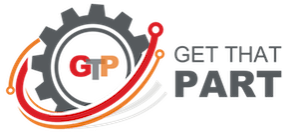- Security
- Other
- Video
- PAPER SHREDDERS
- Shredder Oil
- Parts
- Dell Parts
- Gateway
- Panasonic Parts
- Ricoh Parts
- Samsung Parts
- Kyocera Mita Parts
- Commercial Printing Equipment
- SERVER Parts
- IBM Parts
- Epson Parts
- Tally Parts
- Apple Parts
- Intermec Parts
- Lantronix Parts
- Primera/Bravo II
- Datamax
- Electrical
- Contex Parts
- Microboards Parts
- Fuji Parts
- MagiCard Parts
- Electrograph Parts
- Formax Parts
- Memorex Parts
- Primera Bravo Pro
- Fargo Parts
- Fujitsu Parts
- Cisco Parts
- Toshiba Parts
- HP Parts
- Lexmark Parts
- XEROX Parts
- Kodak Parts
- Konica Minolta parts
- Okidata parts
- Canon Parts
- Brother Parts
- Paper Trays
- Sharp Parts
- NEC Parts
- Printers
- Copiers
- GEN OFFICE EQMT
- Fax
- Testing Equipment
- Peripherals
- Paper Folders
- Docking Stations
- Keyboards
- Mice
- Mouse Trak Trackballs
- Card Reader
- Joystick
- Disc Drives
- Wedge Scanner
- Video/Audio/Communications
- Dictation
- Battery Support
- DISC DUPLICATORS & PUBLISHERS
- GPS Equipment
- Cell Phone Accessories
- Camera Equipment
- KVM Switches
- Other Office Equipment
- Calculator
- Media Converters
- eReader
- Power Adapters
- Power Supply
- Modems
- Networking
- Computer / CPU
- Medical Equipment
- Commercial Kitchen
Miltope Teleprinter / Teletype Machine
Type TT-768/TYC-39(V) / HSP3609-212AX
Before Internet
Type TT-768/TYC-39(V) / HSP3609-212AX
Before Internet
Before There Was Email
Before There Were Fax Machines
......There Were TeleType / TelePrinter Machines!
Own A Piece Of History !
Own A Piece Of History !
CALL US with questions - Our business line is 410-374-1261
About This Item
Actual item shown. Inspected by our tech team. We had no source for 208VDC to test, so we could not. However, there was paper left in the machine from the last printing job and all switches and controls appear to function as intended. It appears in very good condition. This machine sells as-is with no opportunity to return.
Know What You are Buying
- We typically take the time to post actual pictures of the unit you are buying
- We also typically take the time to thoroughly test the units we are selling
- Buy with CONFIDENCE from a reputable seller with 20 Years experience
DESCRIPTION
Manufacturer - Miltope
Model - HSP3609-212AX32095 / TT-768/TYC-39(V)
Machine ID - SM-D-814577-1
S/N - 468200-1C / 32187014
NSN - 5805-01-120-2928
About the TT-768/TYC-39(V)
Specifications/Features
Print speed: three hundred 80 charcter lines per minute; line spacing 6 per inch; paper type: standard stock; pressure sensitive; 80 column fanfold; o/p requirements: 20.5 to 30 vdc; 10.7 amperes max. At 28 vdc; o/a dimensions: 20.0 in. L; 19.0 in. W; 15.5 in. H; 80 lbs. Max.; rack mounted
ABOUT THIS MACHINE
A teleprinter (teletypewriter, teletype or TTY) is an electromechanical device that can be used to send and receive typed messages through various communications channels, in both point-to-point and point-to-multipoint configurations. Initially they were used in telegraphy, which developed in the late 1830s and 1840s as the first use of electrical engineering,[1] though teleprinters were not used for telegraphy until 1887 at the earliest.[2] The machines were adapted to provide a user interface to early mainframe computers and minicomputers, sending typed data to the computer and printing the response. Some models could also be used to create punched tape for data storage (either from typed input or from data received from a remote source) and to read back such tape for local printing or transmission.
Teleprinters could use a variety of different communication media. These included a simple pair of wires; dedicated non-switched telephone circuits (leased lines); switched networks that operated similarly to the public telephone network (telex); and radio and microwave links (telex-on-radio, or TOR). A teleprinter attached to a modem could also communicate through standard switched public telephone lines. This latter configuration was often used to connect teleprinters to remote computers, particularly in time-sharing environments.
CALL US with questions - Our business line is 410-374-1261
Thanks for looking!
























